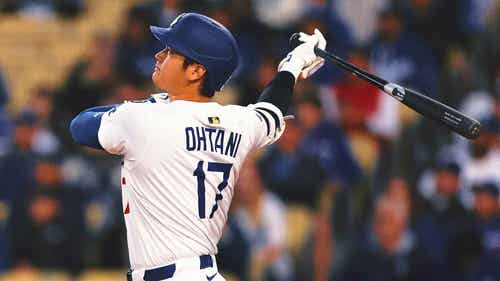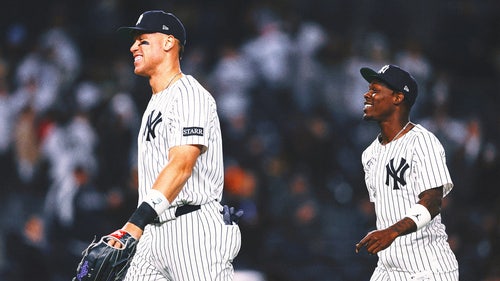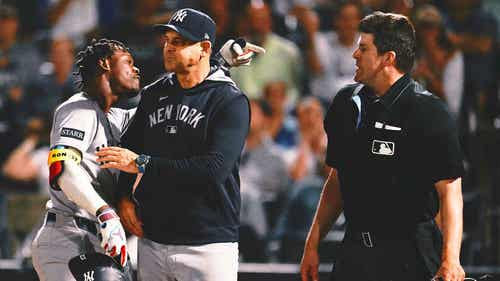
What is wrong with David Ortiz?
By Matthew Kory
David Ortiz is hitting — that is, to the extent he has stood in the batters box with a bat and hit a pitched ball and run towards first base. He is hitting, that is, in that he is and has been a hitter in the technical sense of the term. He is not hitting in that he is not hitting. That is to say, he is not hitting in the David Ortiz sense, the sense where he crushes line drives and smacks majestic home runs. David Ortiz, it should be noted, is 39 years old. The implication is that David Ortiz is, like all of us, getting older — and also like all of us, but only relevant to him, his baseball skills are eroding. When a baseball player reaches Ortiz’s age, the end is coming fast; it’s just a question of when. Based on the way Ortiz’s first two months have gone, maybe that when is now.
It was only last season Ortiz hit .263/.355/.517. That’s a wRC+ of 135. Quite good! Ortiz spent this May hitting .214/.287/.337, however, and it’s not as thought he was much better in April either. His combined slash line this season is .224/.308/.379. With his age and skill set, that’s bound to engender talks of his retirement. Baseball death, often like real death I suppose, can arrive quickly. But Ortiz has had tough starts to seasons in the past and gone on to excellence. Some have postulated that, instead of age, the problem is mechanical issues with Ortiz’s swing that are the true culprit. It is possible Ortiz’s bad start is entirely age related and this is who he is now, i.e. someone whose time has gone. It’s also possible that his lousy production is entirely the fault of faulty swing mechanics. It’s also possible that it’s some combination of both.
Let’s see if we can determine the difference between Ortiz now and Ortiz over the previous few seasons in terms of production. Between 2010, a season I picked because by then he had recovered from a serious wrist injury, and 2014, Ortiz averaged 33 doubles and 30 homers per season. Last season he hit 27 and 35, respectively. This year Ortiz has 11 doubles and six homers (through Wednesday’s games). Oddly, Ortiz recorded 518 at-bats in both 2013 and 2014, so let’s go with that number. So far this season, he’s had 181 at-bats. That’s 0.06077 doubles per at-bat and 0.0332 homers per at-bat. If Ortiz finishes with 518 at-bats this season and produces doubles and home runs at his current pace, he’ll have 32 and 17 of them, respectively. The doubles are right on pace. The homers aren’t. Doing the same for hits, at his current pace he’ll end up with 117, 19 fewer than last season. The problem seems to be a few fewer singles and a good number of home runs.
So let’s start our discussion of David Ortiz’s season with this fact: Ortiz is hitting grounders. Lots of them. Through Tuesday’s game, 44% of Ortiz’s balls in play were hit on the ground. Compare that to his career mark of 36%, which is exactly the same figure as he posted last season. So, more ground balls and a few more infield pop-ups for Ortiz. While infield pop-ups are always bad, grounders aren’t bad if you are Billy Hamilton. But David Ortiz is not Billy Hamilton. He’s more Billy Butler than Billy Hamilton, and he’s even more David Ortiz than he is Billy Butler. In the end, Ortiz is a power hitter like a lion is a meat eater. That’s what sustains him. When he ceases to do that he ceases to do anything. Which is why his hitting more ground balls is a serious issue for Ortiz.
But getting away from the philosophy, there’s also the reality that balls hit on the ground, even if they are hit with extreme velocity, don’t generate much in the power department. Then there is the fact that Ortiz is not hitting his grounders with extreme velocity. The two prior seasons saw 27.4% and 28.0% of the grounders off Ortiz’s bat hit hard. This season he’s at just 18%, the lowest rate of his career. That might explain why Ortiz is hitting just .141 on ground balls this season. That’s a very small number, especially when compared to the league average of .232. Of course, Ortiz hit .178 on grounders last season against a league average of .239, so it’s not like what he’s doing in this narrow band of potential production is a death sentence. Still, it helps account for the drop in batting average. What it doesn’t solve is much in the way of his power problem.
Or does it? Each at-bat is an opportunity. A home run is an event contributed to equally by the batter and pitcher. The pitcher throws the pitch of a variety and in a specific location to the hitter giving him the ability to hit it out. The batter then does his part and hits it out. Pitchers throw numerous pitches that could be home runs but aren’t because the batter wasn’t able to take advantage of the opportunity. One of the advantages of patience is, in theory, an increased chance that the pitcher makes a mistake. The more pitches he throws, the more likely he spins a slider or misplaces a fastball. So when Ortiz hits a weak grounder to second, it’s not that he could have hit that pitch into the bleachers. Maybe he could have, but more likely he could have hit one of the previous pitches he saw or one of the subsequent pitches, had he not swung or fouled off that pitch. That’s not really a plate-patience issue so much as an exactness issue.
So grounders, weak grounders, and more weak grounders are all parts of our problem. This brings us to the thing that keeps Ortiz up nights: the shift. The shift isn’t keeping Ortiz from hitting home runs, but it very likely is keeping him from hitting many more singles. No hitter in baseball has faced the shift more frequently than Ortiz this season, who still hits many grounders and line drives into the teeth of it. But while Ortiz would undoubtedly be more productive without the shift, I don’t believe it is preventing him from being productive.
Ortiz isn’t hitting his fly balls as hard as he has in previous seasons either. The fewest number of Ortiz’s fly balls have been hit hard, 33%, since the 2009 season when his wrist was hurt, and the second fewest of his career. He’s not hitting the ball as hard and he’s not hitting it as far, as evidenced by his spray charts.
One could look at that data and postulate Ortiz is getting old. Hitting a major-league pitch over the fence requires all types of coordination and strength and if one thing goes wrong the whole house of cards can topple. The increase in ground balls, the weaker contact — it all points towards the conclusion that age is starting to get the upper hand. Except, maybe it doesn’t. Anecdotally it seems that way, but I’m not sure any of the information I presented above proves Ortiz’s problem isn’t mechanical. Is Ortiz hitting the ball more weakly because of age or because his swing is messed up? I’m not sure we can definitively know.
On May 28 and 29, Ortiz sat on the bench. He wasn’t hurt; rather, he was getting time off to clear his head. He studied video of himself. He tried to work on the flaws he saw. Since he’s returned to the lineup he’s hit .316/.350/.474. It’s all of five games, but it’s something.
One more thing before we get to the conclusion. David Ortiz, like many left-handed hitters, has never been particularly strong against same-sided throwers. His OPS is 162 points lower against lefties. This season that difference in OPS is 579. That’s massive. So far this season 63 of Ortiz’s plate appearances have come against lefties. His BABIP is through the floor, and he’s not hitting the ball as hard as he normally does, but his strikeout rate is consistent with his career averages. Against right-handers, though, he’s been the same old Ortiz.
Ortiz has seen this all before. Pitchers aren’t approaching him differently and neither are fielders. He is simply doing less with it than he has previously. It’s tempting to count him out given his age and his level of production, but people have done that before and looked silly for it. Way back up there, a thousand tons of information ago, I suggested Ortiz’s problems might be part aging and part mechanical. I believe that’s true. I think we know what Ortiz is doing wrong. I’m just not sure we know why he’s doing it.
More from Fangraphs:





